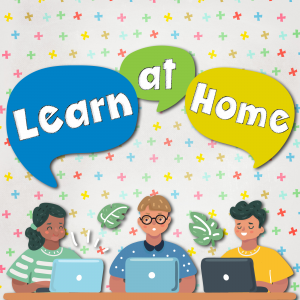
This post is part of a blog series: 9 Strategies for Successful Reading
If you haven’t read the other posts in the series, please read #1: Prepare, #2: Making Connections and Background Knowledge, #3: Asking Questions, #4: Prediction, #5: Drawing Inferences, #6: Determining Importance, and #7: Creating Mental Images.
You’re reading with your child or helping them with their homework when they come to a word, phrase, or section and get stuck. What do they do?
In this situation, inexperienced or struggling readers often freeze and give up or they speed up to quickly get past the challenging bit of text. You’ve probably heard or seen this before from your child. They get to a word or section in a book or a word problem in math and rush through it, thinking that if they hurry and mumble, you won’t notice they do not understand what they are reading. Or perhaps you’ve seen your child give up on a book in frustration because it’s too hard.
What confident, experienced readers do is try different strategies (like the ones highlighted in this blog series) to figure out what they do not understand.
It can help struggling readers to know that all readers get stuck. It happens to everyone at some point! What experienced readers do is we go back and repair our understanding.
Strategy #8: Repairing Understanding
There are several strategies to try when your child gets stuck in their reading.
Re-reading
Some kids might need to be told that it’s okay to re-read. Inexperienced readers often think they have to start on page one and plow through to the end without stopping or re-reading.
However, re-reading can be a powerful tool! With re-reading, your child might find they missed something, or they understand something they didn’t get before, now that they have more information.
When reading fiction, your child might need to go back and re-read the first few pages to remind themselves of who the main characters are. The beginnings of some books are so full of information, new characters and actions, it’s hard for even confident readers to keep track.
Tell your child it’s fine to go back to early pages, scenes, or chapters to remind themselves about characters or what happened.
Context Clues
If your child gets stuck, have them look at the words and sentences around the word or phrase where they got stuck.
Does any of that help them make sense of what they are reading? For example, if your child is reading about the ocean and comes across a word in which they are unfamiliar, have them think about the topic. Thinking about the ocean and the creatures within it might help makes sense of an unfamiliar word.
If the problem is a word or two, have your child skip those words and finish the sentence. Often, by the end of the sentence, the unfamiliar word will become clear and make sense.
Same with skipping a sentence to read the rest of the paragraph. By skipping ahead, your young reader can gather more context clues.
Slow Down
This is another strategy where inexperienced readers might need to be given permission to do! It’s okay to go slowly.
What often happens is kids rush through reading when they are uncomfortable. Have them take a moment, pause, go back a sentence or two, and then read slowly through the troublesome word, sentence, or passage.
This can often work wonders! When they slow down, their brains have more time to process the information.
Think about the reading
This one goes well with slowing down. When your child gets stuck, have them stop for a moment and think about several things: what they have already read, what they predict will happen next, and what the text is trying to do (this works better with non-fiction).
If the text is informative, like a textbook or article, understanding the author’s purpose can help make sense of a troublesome word or section.
Ask Questions, Make Connections
If you’ve been following this blog series, you’ll recognize these strategies. They pop up everywhere! When kids ask questions about the text and make connections in their reading to other parts of their lives, it engages their brains. It creates meaning!
Getting stuck is nothing to be ashamed about! It happens to the most experienced readers among us. If understanding breaks down for your young reader try some of the above strategies.
 About this blog series
About this blog series
We’ll go over 9 strategies in this series of blog posts. Your child might not need all nine. One might work magic! If you are a good reader and haven’t ever thought about how you read, you might be surprised to discover you use some or all of these strategies.
And again, a reminder that good readers are not smarter than readers who struggle. Not at all! Many highly intelligent and successful people have struggled with reading, and they became good readers. What they do, and what all good readers do, is develop habits and strategies that help them comprehend what they are reading and give them skills for when they get stuck.
Visit Learn at Home for even more great resources, including:
- Free online tutoring
- Online tools available 24x7x365
- Recommended items from our collection that you can pick up curbside

